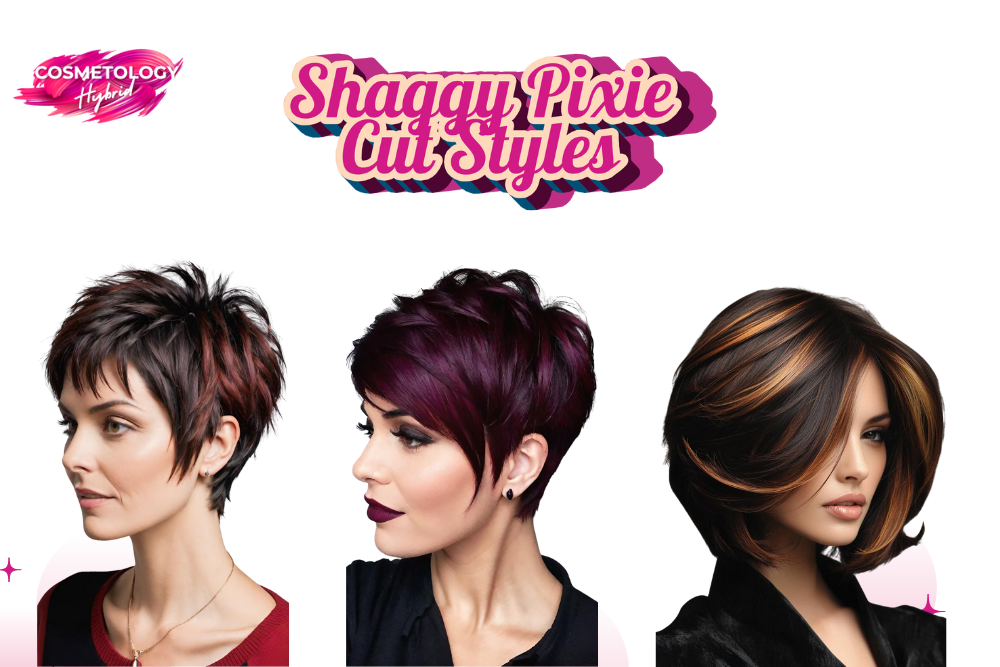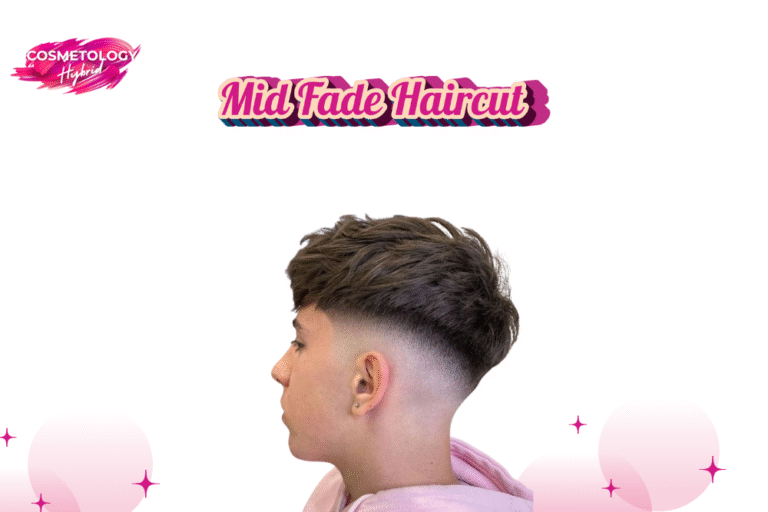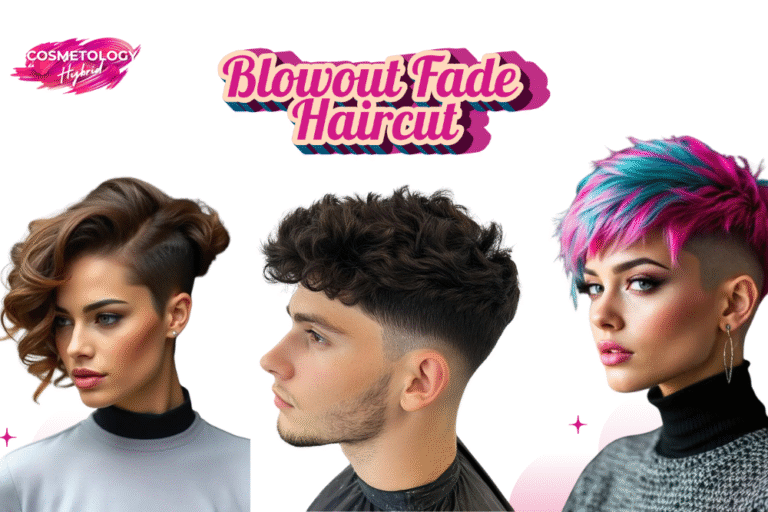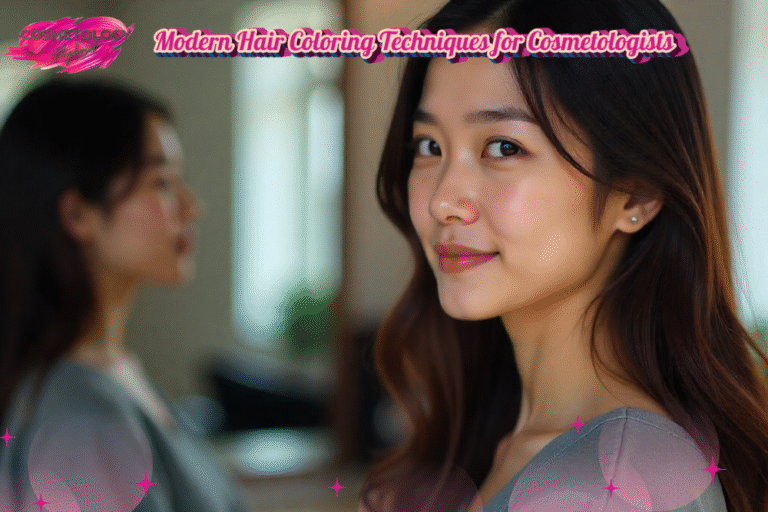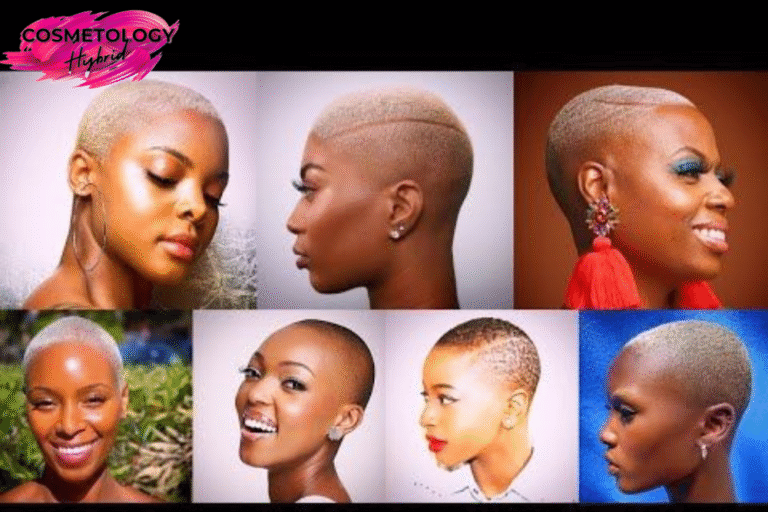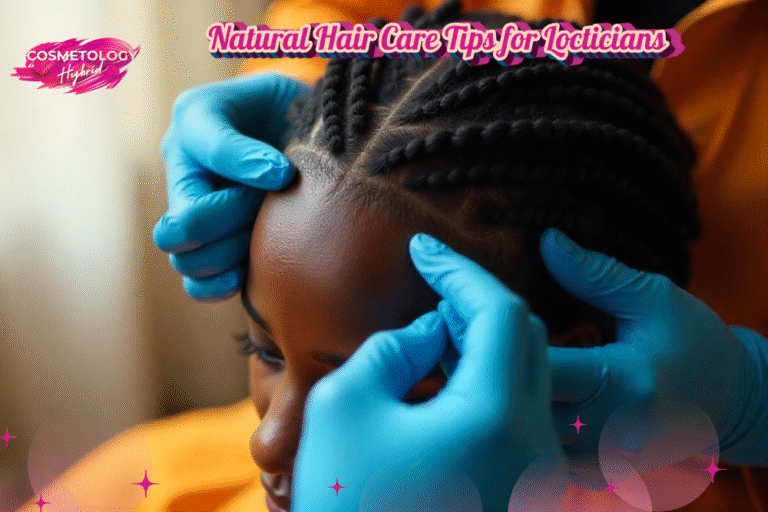The shaggy pixie cut blends cropped length with messy, textured layers to create lively movement and easy style. It suits many hair types and moods. Short mornings, quick styling, and bold character make it a favorite for people who want low effort and clear personality.
What Is A Shaggy Pixie Cut, Key Features
A shaggy pixie cut pairs cropped length with interior layers that build texture and motion. Stylists craft choppy ends and a lived in top to create natural volume. This design gives a casual silhouette while still keeping clean lines around the nape and ears.
Key features include textured layers, piecey fringe, and a soft, choppy finish that hides awkward growth. The cut suits many routines because it needs minimal styling. It often appears in lists of short hair with texture and is shown with layered pixie cut variations in styling galleries.
Texture and layers that do the work
Texture wins here. Internal layering removes weight and adds spring so strands separate naturally. Stylists use razoring to create feathery ends that catch light. The result is a textured pixie cut that looks messy on purpose, often described as a relaxed tousled pixie cut.
Length map, crown, sides, fringe
Consider the length map as a blueprint. The crown carries volume, sides taper close, and the fringe defines the face. Altering any zone changes the whole feel. A higher crown adds lift, a long fringe softens features, and a short pixie shag haircut balances youth and edge.
Who it suits and who should tweak it
This style suits people who want bold hair without big time investment. It flatters active lifestyles and creative fields. Those with stubborn cowlicks need strategic layering, and very fine strands may need product to hold shape. Ask for a low maintenance pixie cut plan at consultation.
Shaggy Pixie Cut vs Classic Pixie vs Bixie [Quick Comparison]
Pick a classic pixie for neat, close cropped shape. Choose a shaggy pixie bob (bixie) to keep bob length while enjoying pixie ease. The shaggy pixie cut sits between these two, trading precision for texture and offering easier grow out.
Styling changes with intent. A classic needs smoothing, a bixie may need shaping and weight control, while a shaggy version loves separation. For women seeking trendy pixie cuts, the shaggy choice lets texture lead. It also hides uneven growth with layered design.
Shape and silhouette
Silhouette matters. A choppy edge reads dynamic while a smooth crop reads classic. The shaggy shape breaks the head line into soft planes that emphasize cheekbones and crown volume. It is a modern way to show bold styling with natural choppy pixie cut movement.
Styling time and tools
Most days need little more than finger styling and a texturizing spray. For polish, a small flat iron or round brush adds shape in minutes. Learning how to style a pixie cut means choosing one go to product and a quick routine that fits your mornings.
Grow out and upkeep
Grow out feels natural with layers that blend at every length. Plan trims to soften stray pieces and keep the fringe wearable. A consistent maintenance rhythm prevents awkward spikes. Think of styling as small daily edits not major overhauls, and trust short haircut maintenance routines.
Best Shaggy Pixie Cuts By Face Shape
Face shape guides matter. The shaggy pixie cut adapts by moving volume and fringe to flatter each profile. With subtle tweaks you can add height, soften angles, or shorten the forehead line. This versatility makes it one of the smartest short hairstyles for women to choose.
Start with your main goal. If you want length around the face ask for softer fringe. For lift ask the stylist for crown layers. The right balance is a plan not a guess and it will make the layered short hairstyles work for you.
Round face, add height and angles
For round faces a shaggy pixie for round face uses crown height and tighter sides to add length. Angled side pieces create visual lines and a side part heightens contrast. Ask for piecey layers to sculpt cheeks. These small moves are smart pixie cut styling hacks.
Oval face, keep balance and movement
Oval faces have natural balance so keep movement light and even. Soft layers preserve shape while letting texture breathe. This face shape can wear bold fringe or short sides with confidence. Try modern looks from pixie hair ideas 2025 and adapt detail to your personal style.
Square or angular, soften the edges
Angular jaws need softening with rounded layers and wispy fringe. Keep side pieces longer to blur hard lines and add movement at the top. Steer away from blunt heavy cuts that emphasize angles. Choose a look from the feminine short haircuts family to soften edges.
Heart or diamond, fringe that flatters
Heart and diamond shapes benefit from side swept or piecey bangs to reduce forehead width and balance the chin. Light layer placement frames the eyes without heavy top volume. These choices follow a practical face shape haircut guide and help keep proportions in harmony.
Shaggy Pixie Ideas By Hair Type
Hair type changes approach, so customize the shaggy pixie cut to fiber and density. Fine hair needs airy layering, thick hair needs debulking, and curls need defined shaping. A stylist who reads strand behavior will craft layers that enhance natural movement and reduce styling resistance.
Start with a consultation that shows the texture you want to keep. Techniques vary with tools and cutting angle. Listen for tests like point cutting or scissor over comb. The goal is a short shaggy haircut that cooperates with your hair rather than fights it.
If reading this has you curious about a career in barbering, why not take the next step? At Hybrid Cosmetology School, you can enroll in our Barbering Program and start building the skills that set you apart in the industry
Fine or thin hair, airy layers that lift
Fine hair benefits from internal cuts that add body without weight. Ask for short graduation at the crown and feathered ends that catch air. A small amount of mousse or volumizer supports the shape. These steps make a shaggy pixie for fine hair read fuller and alive.
Thick hair, weight removal that behaves
Thick density needs selective thinning and strategic razoring to avoid bulk. The stylist removes weight while preserving shape so the hair lies. This creates controlled movement that tames volume instead of exploding out. The result sits with purpose and can look like one of the best edgy short haircuts.
Wavy and curly hair, shape without bulk
Waves and curls need shaping that respects pattern. Keep length to allow curl formation and add layers to prevent a triangular silhouette. Dry cutting with curls on the head helps accuracy. That approach produces a soft, defined tousled pixie cut that never looks forced.
Coily hair, definition and shrinkage control
Coils need length to show pattern and careful layering to control shrinkage. Hydration and product choice define curls and prevent frizz. The cut keeps density where needed and lightens where it pulls. This results in a structured, lively short hair with texture that honors curl integrity.
Low Maintenance Styling, Day To Day Routine
Daily simplicity is the main draw. A common wash routine uses mild shampoo and a leave in spray for texture. Drying takes minutes when you scrunch or shape with fingers. This routine favors natural movement and keeps short haircut maintenance easy for busy mornings.
To speed styling, keep a small kit with texturizer and matte paste. Work product in dry hair for definition and separate pieces with fingertips. A simple nightly routine like silk pillowcases prolongs shape. These steps lower overall effort and teach you how to style a pixie cut efficiently.
Air dry steps for natural texture
Pat hair with a towel and apply a light salt spray. Use fingers to tousle and encourage natural waves or separation. Let hair dry without heavy heat to keep the texture alive. This simple method makes a textured pixie cut look intentionally undone and effortless.
Fast heat style in under 10 minutes
Use a mini flat iron or small barrel to bend pieces and tame frizz. Work in small sections then break them up with paste for movement. Finish with a quick mist of flexible hold spray. This routine creates a modern pixie shag hairstyle in under ten minutes.
Second day refresh that actually lasts
Revive second day hair with a water spritz and a small scoop of matte paste. Focus on roots and crown then ruffle through. Dry shampoo at the temple extends volume and reduces oil. These steps make a messy pixie cut look fresh without a full wash.
Ready to chase your dream? Enroll in our Cosmetology Program at Hybrid Cosmetology School and get started on a career filled with creativity, opportunity, and growth.
Product Playbook For A Shaggy Pixie
Products make the shaggy pixie cut sing. Pick a light texture spray, a matte paste or clay for hold, and a protective heat mist. Keep a small travel kit for touch ups. The right trio adds separation without stiffness or grease.
Avoid heavy creams that collapse pieces. For shine choose a light serum used sparingly. Experiment in small amounts and build texture slowly. Product choice depends on hair type and climate so test samples before committing. This ensures daily styling stays simple and effective.
Texture spray and matte paste
Start with a texture spray to lift sections then add a matte paste for hold. Warm the paste on fingers then piece out ends. This keeps weight low and separation high. The method is ideal for a defined, modern choppy pixie cut that moves naturally.
Volumizer and root lift
Apply volumizer at the roots while hair is damp to boost crown lift. Use a targeted root lift foam and then rough dry with hands for texture. These small actions prevent flatness and make layers readable. They are core picks among the best products for pixie cuts.
Heat protectant, shine, and hold
A heat protectant prevents damage during quick touch ups. Choose a lightweight serum for shine without weighing hair down. For hold, flexible sprays keep texture alive instead of locking hair stiff. These essentials protect the hair and keep short hair with texture lively all day.
| Product | Purpose | Quick Tip |
| Texture spray | Lift and separation | Spray on damp or dry hair |
| Matte paste | Definition and hold | Warm between fingers |
| Root volumizer | Crown lift | Apply at roots on damp hair |
Color Ideas That Make A Shaggy Pixie Pop
Color adds depth and shows texture, so pick a palette that highlights layers. Soft balayage warms the top and face framing strands catch light. Cooler tones can make edges pop. Decide based on skin tone and maintenance appetite to find the best short hair color trends for you.
Balayage gives soft regrowth and suits busy people who skip touch ups. Dimensional brunettes and coppers add warmth and hide texture gaps. Platinum or vivid streaks create contrast for a bold finish. Choose a palette that fits your schedule and your wardrobe choices.
Lived in highlights and balayage
Lived in highlights create depth without harsh grow out. Balayage placed on top layers catches light on movement. It pairs especially well with choppy finishes because the color reads as dimension. Bring pixie cut inspiration photos to your colorist to show placement and intensity.
Dimensional brunettes and coppers
Rich brunettes and warm coppers make layers pop and hide thin spots. Tone choice matters for complexion, so plan with a professional. Low maintenance glazing refreshes color without full dye jobs. This approach keeps depth visible and the cut lively between salon visits.
Platinum, vivid tones, and peekaboos
Bolder hues require upkeep but reward with contrast. Platinum brightens pale features while vivid streaks add personality. Peekaboo color at the underlayer can surprise when you move. If you like risk and style choose vivid options and plan for maintenance.
How To Ask Your Stylist, Consultation Script
Preparation makes the visit efficient. Bring photos and note how much length you want to keep around ears and neck. Discuss parting, pixie cut with bangs, and crown volume. Ask about layering techniques and explain your daily routine so the stylist suggests a realistic layered pixie cut plan.
Be clear about maintenance and budget early. If you want color ask for timelines and touch up costs. Avoid vague terms like short or messy without examples. A short script helps you speak the language and avoid surprises after the chair.
Key terms to say and what to avoid
Ask for piecey layers, textured ends, and a soft, blended fringe if you want movement. Avoid asking simply for short hair without details because outcomes vary. Use photos and say where length must stay. Ask specifically for a layered pixie cut effect to guide the stylist.
Photos to bring and what to point out
Bring several images showing fringe length and crown height rather than one single photo. Point out what you like, such as piecey texture or polished finish. Show the back and side view to set expectations. Clear visual cues like pixie cut inspiration photos help avoid surprises.
Maintenance schedule and budget
Plan trims every six to eight weeks to keep the shape and control fringe. Color touch ups depend on technique, balayage is lower maintenance than full dye. Build a budget that covers trims, occasional toners, and small product replenishment to avoid surprises.
Growing Out A Shaggy Pixie Without The Awkward Phase
Growing out needs a plan that stages trims for shape. Convert the top into softer layers and keep sides tidy to avoid chaos. Small shaping trims every six to eight weeks guide the look. This makes the transition intentional and reduces the awkward middle stage.
Use bangs and face framing to bridge lengths and keep the cut flattering. Incorporate accessories like clips and headbands to disguise uneven areas. Keep a styling routine that changes with length. With intent you can turn an awkward phase into new styling options.
Trim plan and shape checkpoints
Set regular checkpoints at month two, month four, and month six to reassess the long shaggy pixie cut shape and length. Each check trims stray weight and refines the fringe. This keeps lines clean and prevents a floppy mid length while avoiding shock changes.
Bangs and face framing while you grow
Maintain bangs to manage forehead proportions and keep framing layers to soften transitions. Side swept bangs can be grown out gradually into curtain styles. Plan trimming to preserve the look. These small edits maintain motion and keep the growing style elegant rather than messy.
Accessories and styling tricks
Use headbands, decorative clips, and strategic parting to control awkward length. A deep side part changes the silhouette instantly. Twists and mini buns at the back can hide unevenness. These tricks buy time and let you experiment while hair moves through stages.
FAQ, Real Questions People Ask
This section answers practical concerns about styling, maintenance, and suitability. Expect clear, short guidance that solves common problems quickly. If you have a specific hair pattern mention it in the question. The goal is to make decisions easy and reduce styling guesswork.
Below are answers to frequent queries about cowlicks, cuts, and styling for formal events. Read each short reply to find the practical tip you need. These solutions focus on actions you can take at home or discuss with your stylist at the next appointment.
Will it work with my cowlick or hairline
Yes in most cases. A skilled stylist uses directional layering to control cowlicks and set growth patterns. They may leave slightly longer sections to smooth the line or add texture so the cowlick blends. Discuss your natural part and show wet and dry hair to get precise advice.
How often should I cut it
Trim every six to eight weeks to preserve the silhouette and prevent a heavy top. If you prefer longer fringe push trims toward eight weeks. Regular micro trims keep the shape tidy without losing the relaxed texture that makes this style work.
Can I style it for formal events
Yes, transform with a smoothing cream and sleek part or add volume and glossy finish for red carpet glamour. Use pins and decorative clips to craft-controlled shapes. The cut is flexible; a few minutes with heat tools and polish elevate the messy pixie cut to a formal look.

